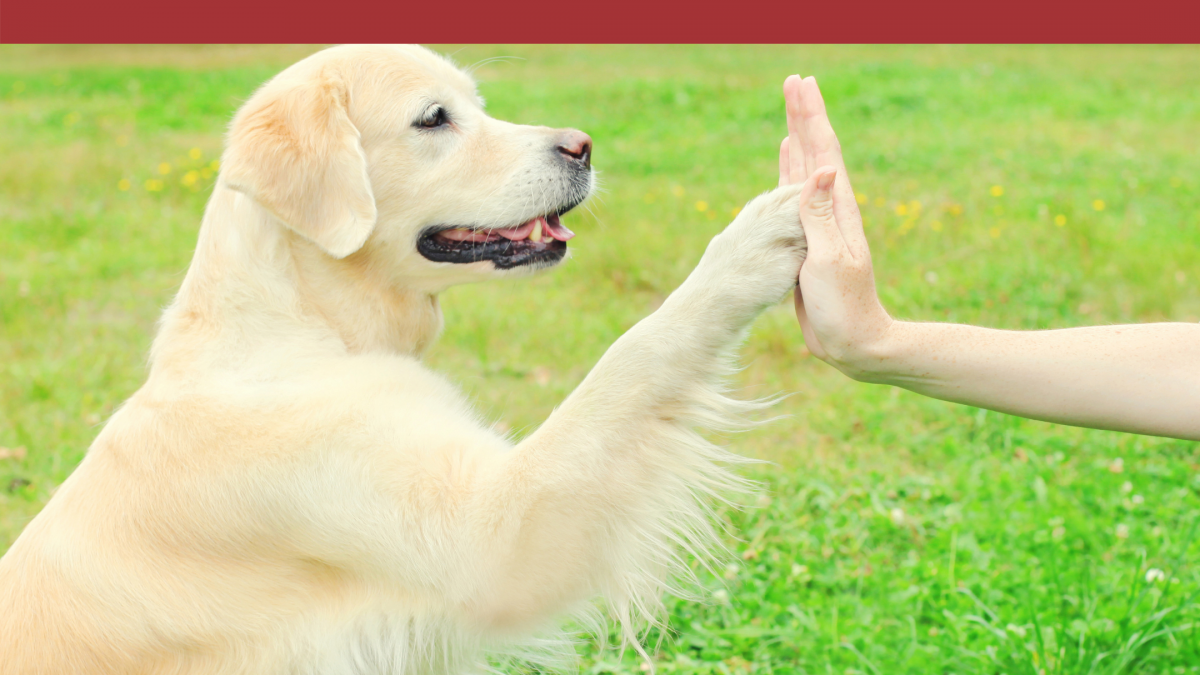Drive and focus are key elements in successfully training and dog and teaching proper leash skills.
Drive and Focus for Good Dog Training & Leash Skills

Why Dog Trainers Use Food When Training
January 25, 2021
Tips for Teaching Leash Walking: Look & Touch Technique
January 31, 2021Drive
Most dogs have an innate “play” or “prey” drive that causes them to want to chase and play with any small critter they may see running around. This doesn’t necessarily mean they want to play with live animals, but may cause them to want to play with toys in the same way.
Dogs with low play/prey drive can have their drive increased by frustrating him and teaching him to play with toys that are just out of reach so that he can be rewarded by catching it. However, if you play too constantly and give your dog rewards immediately, his drive will likely decrease.
Dogs with really high play/prey drive can be taught to control themselves before they may play with you. These dogs can also be rewarded more often and you should avoid frustrating them.
Controlling your dog’s drive in either scenario will help him remain relaxed when distracted by anything he might want to play with outside.
Focus
Your dog will also need to be taught focus, keeping his eye contact and attention on command. Focus will help with distractions while on a walk but will also help nervous or shy dogs not to be afraid of certain things because they can be focused on you.
To train your dog to have good drive and focus, you will need:
- His/her favorite toy
- Pea-sized soft treats
- Clicker
- Patience
Teaching Drive: The Watch Me Command
For drive training, your voice and your dog’s favorite toy will be the rewards. Make sure the toy is extra special and is usually hidden away until it’s time to train him. Also, be sure to use a marker with your voice—like saying “yes!”—before giving your dog his toy so that he will know what he did to earn the toy.
Stand completely still and keep your eyes focused on your dog while holding his toy still and away from your body, without dangling it. You’ll have to stay still while your dog might try to jump and bark at the toy, but eventually he should give up and stare straight at your face, frustrated. Right as he looks at you, verbally mark his behavior—saying “yes” or “good”—and throw his ball or let him jump to get it. You can also use the clicker to mark his good behavior. Repeatedly play this game and, as he becomes successful, give him a command for the behavior, such as “watch me.”
You can teach your dog this same behavior by using treats. Stand still in front of your dog and show him that you have one treat in each hand. Then, bring your hands up to your face (not close to your eyes) and wait patiently. After looking back and forth from hand to hand, your dog will get frustrated and look at you. Again, give your dog a treat as soon as he looks at you. The more you do this, the more you can start to introduce the “watch me” command.
Teaching Focus: The “Look” and “Touch” Commands
For focus training, you will want to teach your dog the “look” command. Start by showing your dog a treat and bringing it up to your nose. Once your dog’s eyes meet yours, give a vocal cue or use your clicker, and give him the treat. Repeat this several times. Follow this by putting a treat in your other hand and bringing your finger up to your nose. Once he makes eye contact, give the vocal/clicker cue and give him the treat with your opposite hand. Again, repeat this several times.
After repeating these two exercises multiple times, try standing and looking at your dog (without showing him a treat) and see if he makes eye contact with you. If he does, give the vocal/clicker cue and give him a treat. If he doesn’t, repeat the exercises again. The more your dog looks at your without using a treat, the more you can try to distract him to see if he will keep eye contact. Try holding his eye contact for 10 seconds, then extend your hand with a treat out to the side and ask him to “look” at you. If he makes eye contact, give him a vocal/clicker cue and a treat.
Another way to teach your dog focus training is with the “touch” command, which involves him touching your hand with his nose. This can take the place of the “come” command and most dogs enjoy it more. Have a clicker and treats in your same hand. Put your opposite hand in the treat bag to make it smell like the treats. Extend your “smelly” hand to your dog’s nose and wait until he touches it to sniff or lick it. Once he does, give him the “yes” vocal cue or use your clicker, followed by a treat. Repeat this, gradually moving your hand further away and rewarding him once he touches your hand. If he doesn’t move to touch your hand, pull your hand behind your back before bringing it back out quickly. As he becomes successful with this exercise, start pairing it with the word “touch.”
Both the “look” and “touch” commands are good for when you are walking your dog in distracting environments. Practice in these environments frequently but keep the exercises short.

